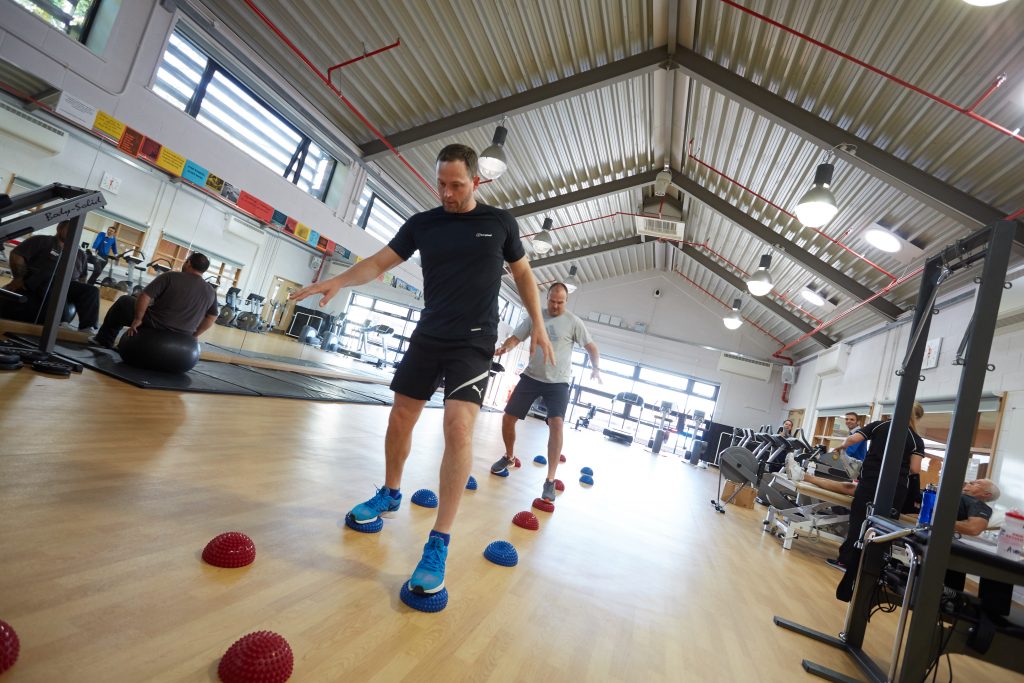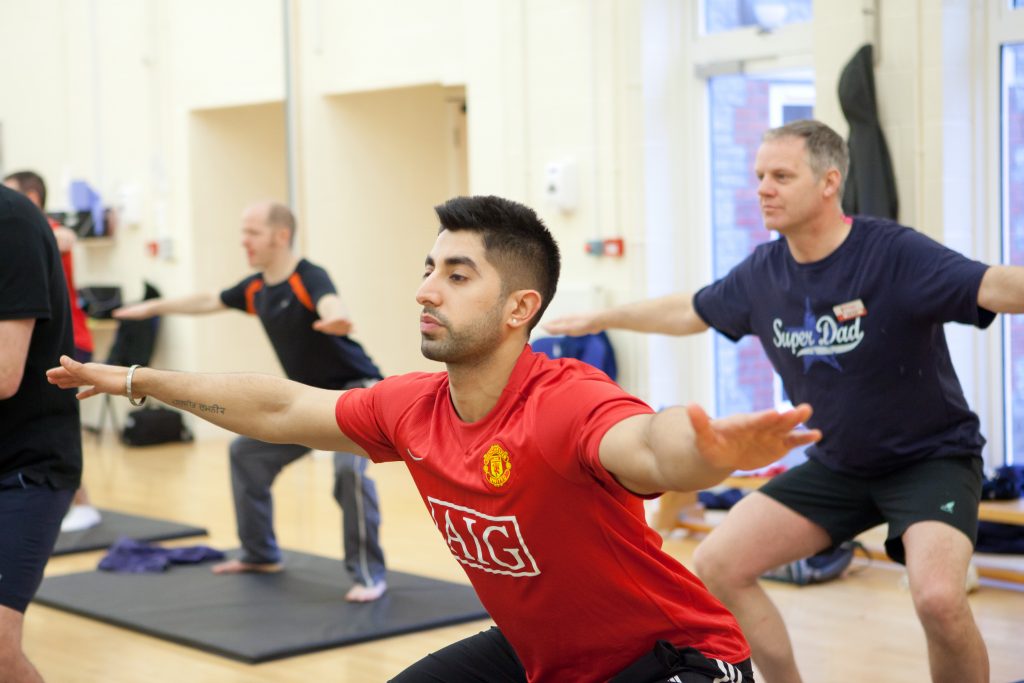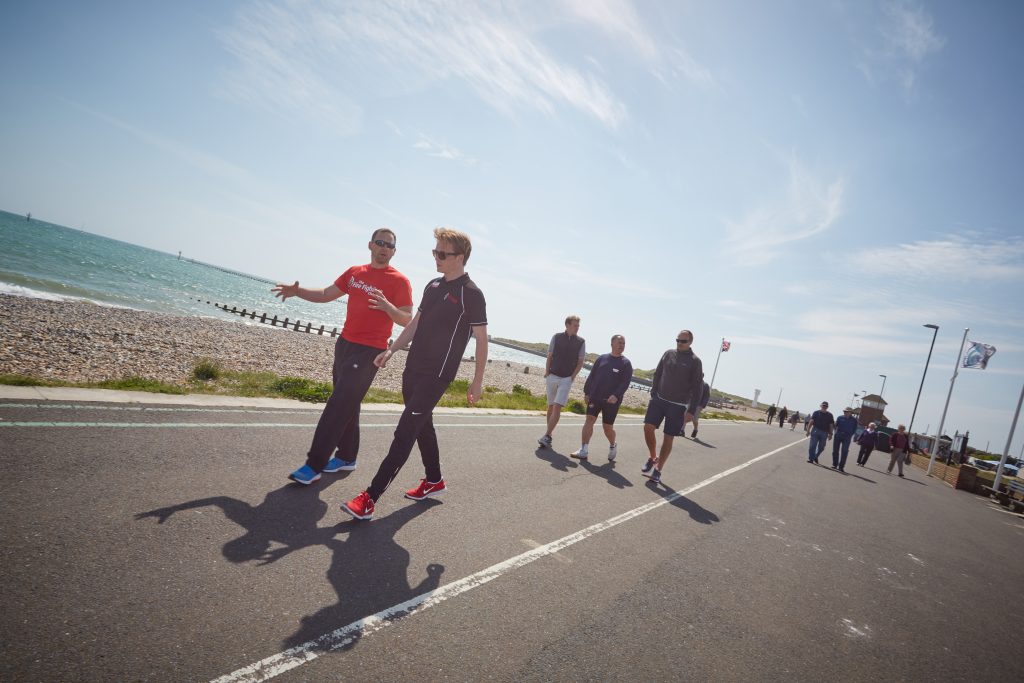Depression is a common mental health disorder, affecting one in ten people at some point during their lifetime. While it can be caused by life-changing events that we have to learn to adjust to, sometimes, there is no obvious reason for feeling depressed. So what do you do when you’re not sure why you feel the way you do, but want to do something about it? One of the answers is to try some physical activity/exercise.

“We know from research that physical activity can be used alongside other interventions in the treatment and management of depression and its associated symptoms,” says Jubilee House Exercise Therapist Gayle Robinson. “So at The Fire Fighters Charity we combine psychological intervention with participation in physical activities such as exercise in water, gym time, fitness sessions and outdoor walks”
Symptoms of depression can include persistent sadness, loss of enjoyment in activities, lack of energy, diminished appetite, disturbed sleep, reduced concentration, low self-esteem, feelings of guilt or unworthiness, pessimism about the future or thoughts of self-harm. However these can be reduced by moving more.
“Moving more can reduce the symptoms of depression and improve your quality of life and wellbeing, as well as boosting self-esteem, mood, sleep quality and energy levels”
Gayle Robinson
“Moving more can reduce the symptoms of depression and improve your quality of life and wellbeing, as well as boosting self-esteem, mood, sleep quality and energy levels,” says Gayle. “Research has shown that when individuals participate in regular physical activity or exercise they report feeling more content, aware and calmer compared to periods of inactivity. Therefore using exercise to manage depression and its symptoms will have a positive effect on our everyday life, making every day decisions and life stresses easier to cope with.”
According to government guidelines, when it comes to physical activity, adults should aim to spend at least 30 minutes a day for five days a week of moderate intensity aerobic exercise. “This means increasing your heart and breathing rate and feel warmer, but are still able to hold a conversation,” explains Gayle. “For example, you could go for a brisk walk or short bike ride, or even do some gardening or housework.”
If you want to do something more intense, or mix up your exercise a little, guidelines suggest spending 75 minutes of vigorous intensity exercise each week.

“That means a substantial increase to your heart rate, rapid breath rate, and difficulty talking while doing the activity,” says Gayle. “This could be running, powerwalking, climbing a hill, fast swimming and other competitive sports.”
Adults should also do at least two types of strengthening exercises each week: “This should include working the main muscles in the body – shoulders, chest, back, abdominals, hips, legs and arms – and may involve using your body weight or working against resistance. Aim to do one-two sets of 8-12 repetitions per muscle group or exercise. This means you might do 12 bicep curls to strengthen the arms, rest for a minute(or longer if required) or work a different body part (known as active recovery) and then repeat a second round of 12 bicep curls.”
You don’t need to hit the gym for these sorts of exercises either, as Gayle says, many of them can be completed at home with things around you: “Using cans of beans or full water bottles are great ways of sneaking in a bit of resistance training while at home,” she says. “The trick is not to do too much; some people think doing loads of high intensity exercise will deliver additional benefits in managing depression, but research has shown this isn’t the case. Some research has even suggested that exercising for more than 90 minutes too often can have negative impact on your mental health. It’s just best to find a way that works for you, without scaring yourself off!”
“One of the easiest, quickest things you can do, is to put your trainers on and go outside for a walk. Step out of your front door and go and explore”
Gayle Robinson
Not sure where to start? First of all, if you have a health condition, you should check any new exercise regimes with your GP. And then you should find something you enjoy doing, so it doesn’t feel like a chore: “It’s much easier to take part in an activity you actually like doing, as you’re more likely to stick to it,” says Gayle. “One of the easiest, quickest things you can do, is to put your trainers on and go outside for a walk. Step out of your front door and go and explore; start with a gentle pace to warm up the body. Then for the bulk of your walk, increase your pace to a moderate intensity, while you enjoy being outdoors and getting some fresh air. Then towards the end of your walk, gradually reduce your pace to allow your body to cool down.”

Why not try making the walk even more enjoyable by listening to music you love or a really good audio book you can get lost in? Or if you prefer to have the company of others, find a local walking group. You can find details of supervised groups you could join online.
For other home fitness ideas check out the NHS live well fitness studio exercise videos “Or if you’re nervous about getting started, speak to your GP about joining a local exercise referral scheme,” says Gayle. “Sessions are supervised by qualified fitness professionals and cater for individuals with various medical conditions, including mental health. The schemes have inclusion and exclusion criteria but provide a safe and effective way to commence exercise.
“If we limit our sedentary behaviour, get up and move more, we can improve both our physical and psychological wellbeing,” says Gayle. “Not only that, but we could also reduce the risk of experiencing other mental health problems in the future.

